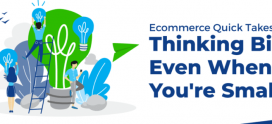Three Psychological Pricing Techniques To Increase The Average Size Of eCommerce Baskets
Pricing is one of the most complex aspects of eCommerce. Price too high, and you lose sales. Price too low, and you miss out on potential profit. At least, that’s the conventional wisdom. Psychological studies have shown that the impact of pricing choices is a more complex than a simple dynamic of cheaper and more expensive.
Some pricing rules are downright counter-intuitive because shoppers use a host of value heuristics in their shopping decisions that produce behavior that doesn’t seem “rational” from the perspective of classical economics.
To take a simple example that’s been told in numerous different versions — most famously in Robert Cialdini’s Influence — a retailer bought some inexpensive sculptures to sell in her store. She gave them the usual markup. After a few weeks, she was sorry to see that almost none of the sculptures had sold, so she decided to reduce the price. As she was going out of town, she left instructions for her employee to slash the price of the statues. But the employee misunderstood; she increased the price of the statues by fifty percent. Of course, when the retailer returned, all of the sculptures had sold.
The story is apocryphal, but it illustrates an important point: for some goods, the buyer has no knowledge of their intrinsic value so they use price to assess value. A low price implies a low value; a higher price, a higher value.
This pricing effect is just one of many that can impact buying patterns. I’m going to discuss three psychological pricing techniques that every eCommerce retailer should know about.
The Anchor Effect
The Anchor Effect relies on the fact that if a buyer is exposed to a high price for a product, they are likely to value a similar product at a higher price than they would otherwise have. Let’s say you have a Product A that is substantially similar to Product B, other than the addition of an extra feature. By giving Product A a higher price, the anchor effect will “pull up” the perceived value of Product B.
This technique is often used in software sales. Software retailers provide a premium version at a high price, which increases the perceived value of the non-premium version.
Comparative Pricing
Consider a retailer selling shoes. They offer a basic pair of shoes for $200, and a marginally better pair of shoes for $230.
To a customer, the extra $30 seems small change in comparison to the overall cost of the sale, and they’re more likely to make the purchase than if they’d merely been exposed to the $230 pair.
This effect is also excellent for increasing the size of a purchase by promoting small items alongside big ticket products. The value of the small item is assessed in comparison to the size of the purchase as a total, not the absolute value of the product. If a customer is buying an expensive suit, they’re more likely to purchase a matching tie if it’s offered to them at the right time.
This one’s also a favorite of car dealers, who find success in adding extras, the cost of which is significant, but small compared to the total being spent on the car.
The Power Of Prestige
If you’ve ever wondered how Apple gets away with charging so much more than its competitors, prestige is the answer. People will pay more for products that they perceive as more prestigious. In fact, they’ll pay more for identical products if they perceive that the seller is more prestigious, as anyone who has bought a drink from a high-end bar will attest.
This won’t work for all retailers, but for those who sell high-end prestige goods, higher prices actually help reinforce the impression of prestige.
Psychological pricing is a complex subject, and there’s no guarantee that a specific technique will work for every store or product, but, if applied correctly, they can bring about a significant bump in a store’s revenue.



